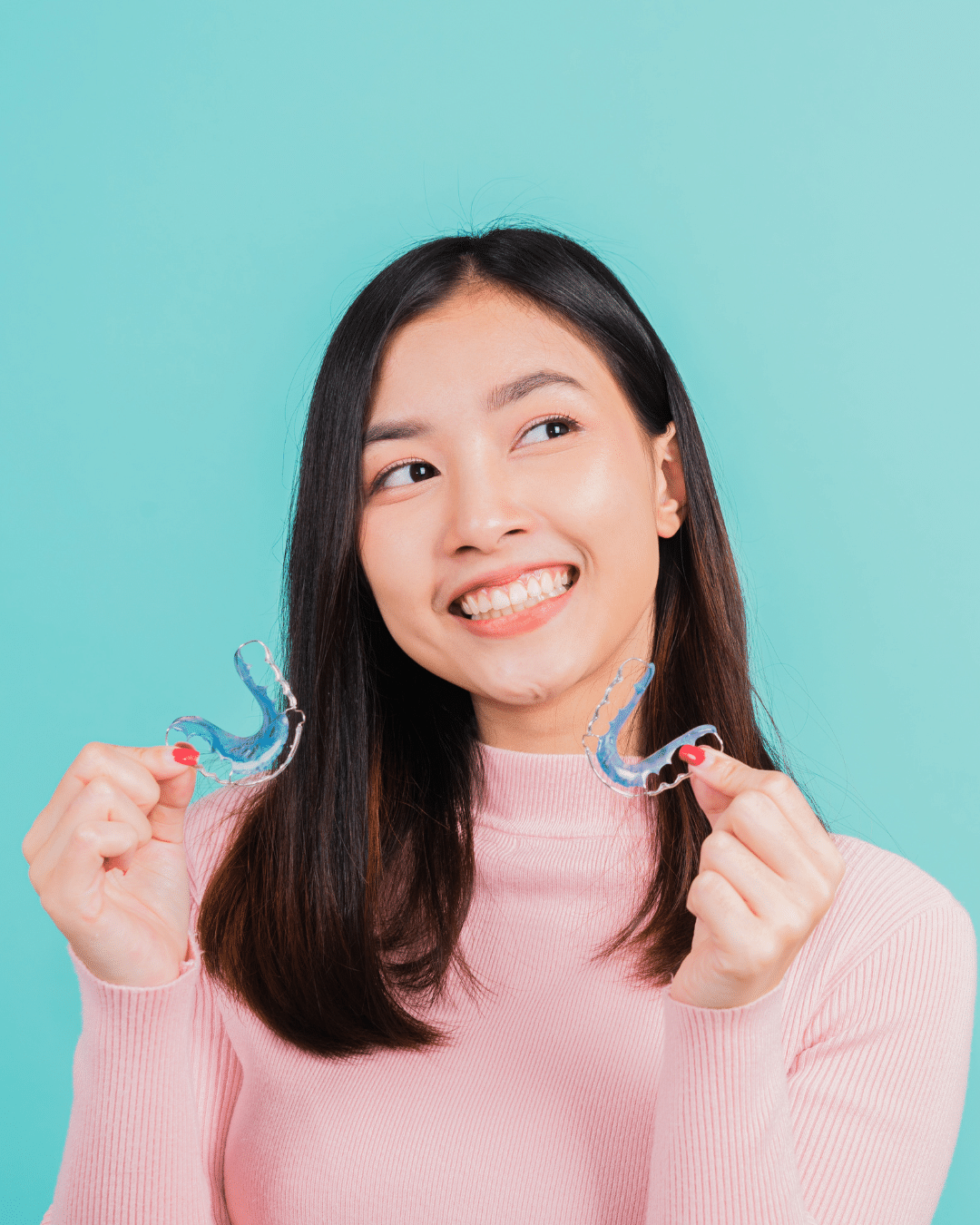After braces or Invisalign treatment is complete, retainers play a critical role in protecting your results. Teeth naturally want to shift over time, and retainers help keep them in their corrected positions while the surrounding bone and tissues stabilize. Wearing your retainer exactly as instructed is essential to maintaining the smile you worked hard to achieve.
Why Are Retainers So Important After Braces or Invisalign?
Once orthodontic appliances are removed, the bone and soft tissues around the teeth need time to fully adapt to their new positions. Without retainers, teeth can begin shifting back quickly. Research shows that teeth continue to move throughout life due to natural forces from the tongue, lips, cheeks, and habits such as clenching or grinding.
For this reason, Dr. Lara Minahan recommends nighttime retainer wear for life. Immediately after treatment, full-time wear is typically prescribed, followed by long-term nightly use to protect your smile.
What Types of Retainers Are Used?
Removable Retainers
Removable retainers are custom-made to fit your teeth and can be taken out for eating and cleaning. They are designed to stabilize your orthodontic correction during the critical post-treatment phase and beyond.
Because retainers are worn long-term, periodic replacement may be necessary. Your original treatment plan includes one set of retainers after braces are removed. Lost or damaged retainers may require a replacement fee.
Fixed (Bonded) Retainers
Bonded retainers consist of a thin wire attached to the back of the front teeth using a special orthodontic adhesive. Although often referred to as “permanent,” these retainers can be removed or repaired if needed.
Bonded retainers require care similar to braces. Biting directly into hard foods such as raw vegetables, nuts, or crusty bread can cause damage. If the wire or adhesive becomes loose or distorted, teeth can shift quickly, so prompt repair is important.
Daily flossing beneath the wire is essential to maintain gum health. Tools such as floss threaders or a Waterpik can make cleaning easier.
How Often Should Retainers Be Worn?
Immediately after treatment, retainers are usually worn full-time. Once stabilization occurs, wear typically transitions to nighttime use. Long-term nightly wear is necessary to maintain results.
How Do I Take Care of My Retainer?
Retainers are made of heat-sensitive materials and should be kept away from hot environments such as dishwashers or car dashboards. When not in use, always store them in their protective case and keep them away from pets.
Clean retainers before and after wear using a toothbrush and mild liquid soap. Denture cleaning solutions can help remove buildup, but retainers should always be rinsed thoroughly before use.
Are There Habits That Require Stronger Retention?
Some habits and conditions increase the risk of tooth movement and may require stricter retainer wear, including:
- Mouth breathing
- Clenching or grinding
- Tongue thrusting or low tongue posture
- Playing reed instruments
- Lip sucking or biting objects like pens
- Spacing or severe rotations before treatment
Consistent retainer use is especially important in these cases.
Frequently Asked Questions
Have questions about wearing or caring for your retainer? These are some of the most common concerns patients have after completing orthodontic treatment.
Can My Teeth Shift Even Years After Orthodontic Treatment?
Yes. Teeth can shift at any stage of life due to natural aging, muscle pressure, and habits. This is why long-term retainer wear is essential, even many years after braces or Invisalign are completed.
What Should I Do If I Haven’t Worn My Retainer in a While?
If your retainer no longer fits comfortably or feels tight, stop wearing it and contact our office. Attempting to force a retainer that no longer fits can damage teeth or gums.
Are Retainers Different After Braces Versus Invisalign?
The purpose of retainers is the same regardless of how teeth were straightened. The type of retainer prescribed depends on your bite, tooth movement, and long-term stability needs rather than the treatment method used.
Can Dental Work Affect How My Retainer Fits?
Yes. Dental procedures such as crowns, fillings, or bonding can change tooth shape slightly. If you have dental work done, your retainer may need to be adjusted or replaced.
What If I Lose My Retainer While Traveling?
Contact our office as soon as possible. We can advise you on next steps and arrange for a replacement to minimize the risk of tooth movement while you are away.
